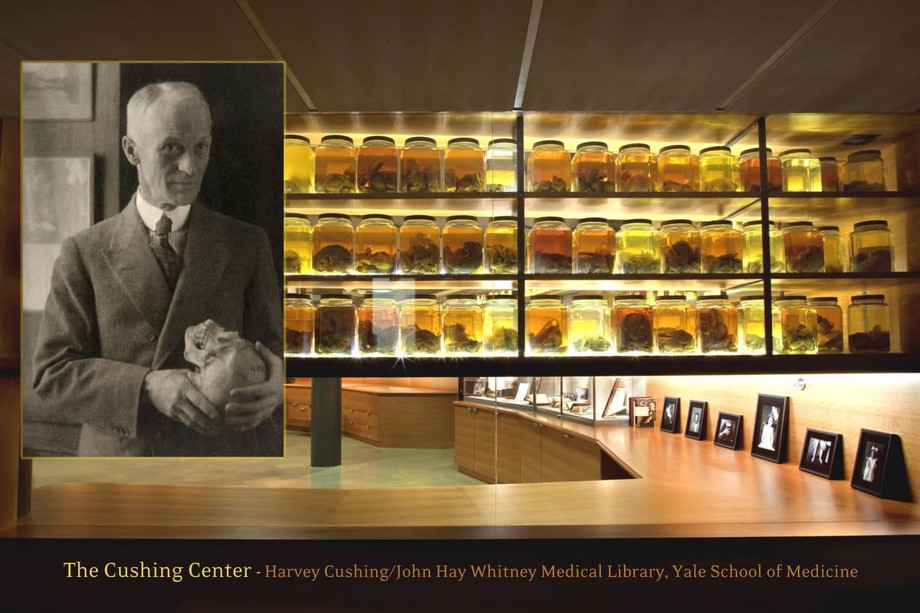SOMETHING TO THINK ABOUT
Why are there hundreds of brains in a Yale basement?
The first Yale students who came face to face with a roomful of brains in jars in the bowels of their dorm must have been
surprised, to say the least. Word got out, and it became a badge of honor to sign the white board documenting a trip to the sub basement of E.S. Harkness Hall, thereby attaining membership in the Brain Society.
LEARNING ABOUT BRAINS
What: A room full of human brains
Where: Cushing/Whitney Medical Library, Yale School of Medicine, 333 Cedar St., New Haven
Cost: Free
Noteworthy: A colleague of Cushing's, Louise Eisenhardt, was director of the Cushing Brain Tumor Registry, the first managing editor of the Journal of Neurosurgery, and one of the first neuropathologists.
A unique record of early neurosurgery, the Cushing Brain Tumor Registry was a learning center for medical professionals for decades. It was all but forgotten and almost discarded until proponents restored the dried-out brains, organized the collection, and opened it to the public in 2010.
If you had to have brain surgery in the early 1900s you'd have wanted Dr. Harvey Cushing to hold the scalpel. Born in 1869 and educated at Yale, Harvard, and Johns Hopkins, Cushing was fascinated with the brain and became a neurosurgery pioneer with an impressive success record. An early adopter of monitoring blood pressure and anesthesia and using stems and tourniquets to curtail bleeding, Cushing operated on several hundred patients a year, documenting cases with detailed notes, photos, and specimens.
The Cushing Center - Harvey Cushing/John Hay Whitney Medical Library Yale Sch Dr. Harvey Cushing was a pioneer in neurosurgery, and his collections of tissue
samples, medical notations, and photographs give insight into the early years of brain surgery.
At the Cushing Brain Center, visitors learn about the doctor service in World War I, his artistic and athletic skills, and his Pulitzer Prize in biography. Cushing's lab coat is displayed, as are his surgical implements, Chinese acupuncture set, patient photo and rare books.
The brains now are in a different basement-a carefully custom designed library space. In context, they help relate the fascinating work of a medical pioneer. All are encouraged to join the Brain Society, with no sneaking around in the dark required.
A calf's liver sporting the signature of Ivan Pavlov (of Pavlov's dogs fame) is on display; Cushing demonstrated an electrosurgical tool and Pavlov signed his name with it.
Secret Connecticut 2021 Stasha Healy
Photo courtesy of Terry Dagradi, Yale University.

